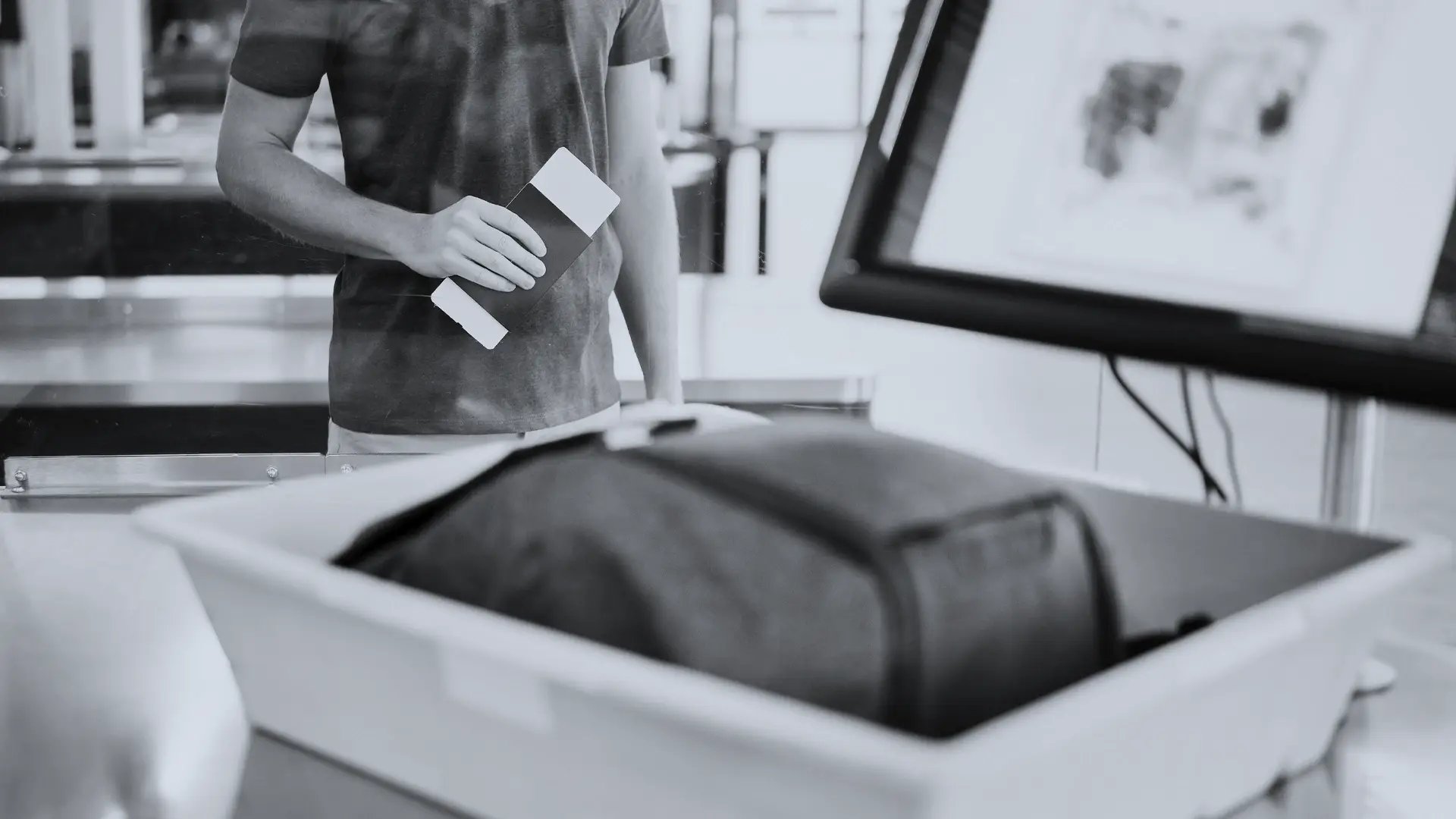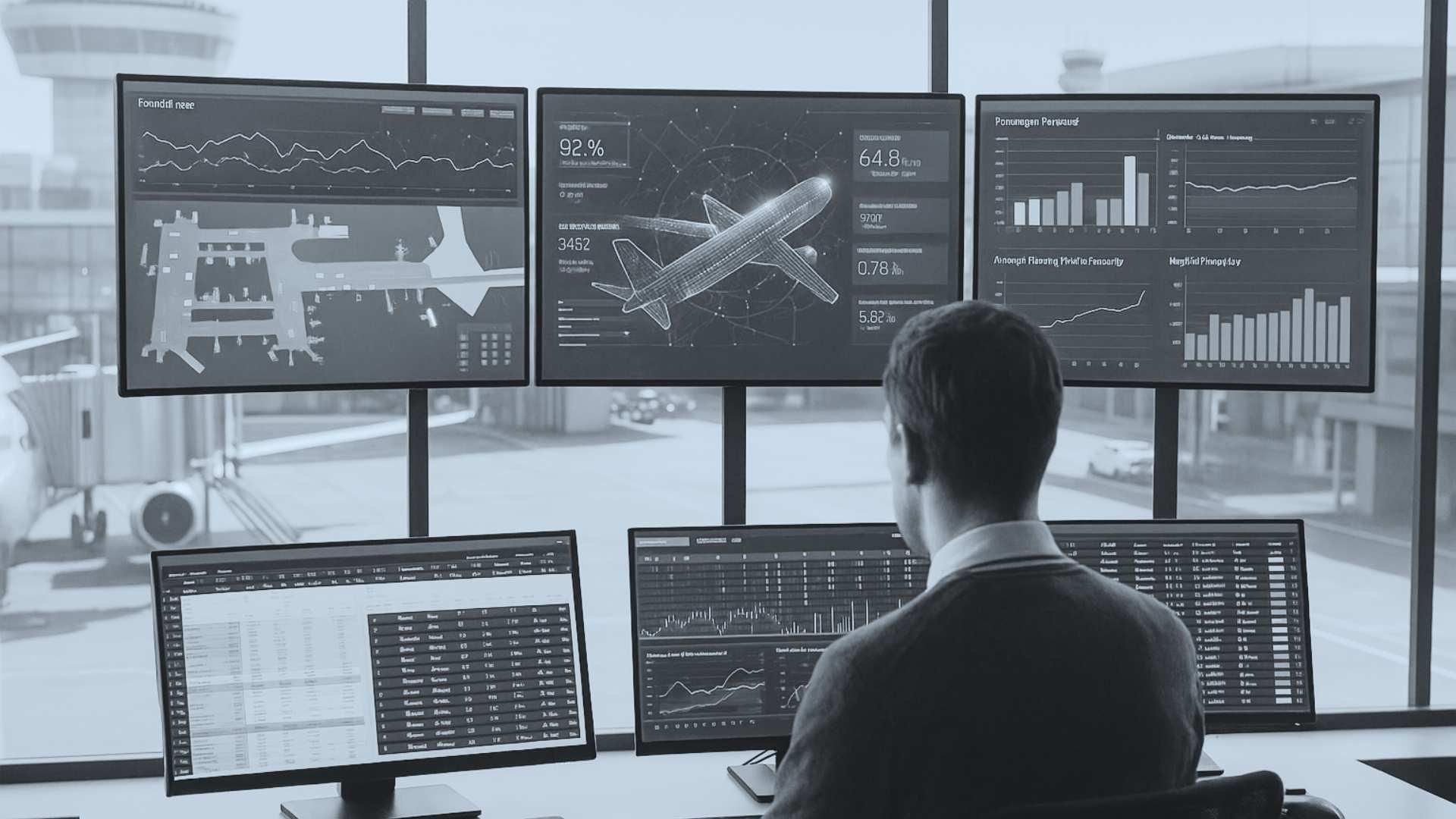The airport security screening process is typically seen as one of the most stressful points of the passenger journey. The many steps — removing jewellery, belts, and shoes, taking liquids and electronics out of bags, and separating belongings into trays — cause queues to build, and passenger frustration along with them.
To mitigate this, airports across the world are prioritizing the application of advanced technologies at the security checkpoint. This is where computed tomography (CT) comes in.
CT technology increases screening accuracy, supports improved decision-making, and boosts operational efficiency. In this article, we’ll cover how CT technology is changing the security screening process and what this means for the future of airport security.
How CT scanners are shaping the future of airport security technology.
Around the globe, airports are adopting computed tomography (CT) technology to optimize the airport security screening process. CT technology, which is typically employed in the medical sector, generates volumetric x-ray images, creating 3D images from hundreds of different views.
When adapted for airport security, CT technology enables security operators to inspect baggage from every angle. These new CT scanners create such a clear image of the bag’s content that the system can automatically detect weapons, explosives, and other prohibited items within the baggage.
Recent advancements in CT scanner technology include improved image resolution and the integration of AI-driven algorithms. These enhancements allow for faster and more accurate threat detection, minimizing the likelihood of false positives and further streamlining the security process.
New legislative updates are also shaping the rollout of this technology. For instance, the European Union has announced a phased mandate requiring the implementation of CT scanners at airports by 2026, while the United States Transportation Security Administration (TSA) has allocated significant funding to accelerate the deployment of these advanced scanners across major airports.
This comes with a variety of benefits, as well as changes that airport passengers and security operators alike will need to adapt to. These include:
- Relaxed liquid limits: With the introduction of CT-scanners, airport laptop and liquid restrictions are being be lifted. Passengers may now carry larger quantities of liquids, although these limits may vary between countries. Recent legislation in the UK, for example, allows liquids up to 2 liters in airports equipped with CT technology.
- Shorter queue times: Featuring automated object recognition software, CT scanners eliminate the need for passengers to remove jewellery, belts, and shoes, as well as liquids and electronic devices from their luggage. This helps drastically reduce queue times at security checkpoints.
- New processing times: The new security technology will change the parameters for security checkpoint planning. The throughput will vary throughout the day, and bottlenecks might move from the x-ray to the doorway scanner. Airports will need to consider these new processing times carefully and with a high level of granularity.
- Reduced physical contact: Allowing liquids and electronic devices to remain in bags during screening reduces the time passengers spend in line with other travelers, as well as the level of contact between passenger, screeners, and surfaces. This improves distancing at security checkpoints, helping to prevent the spread of health risks such as COVID-19.
- Improved decision making and security outcome: With software to detect prohibited items and algorithms for automatic explosives detection, CT scanners support faster, more accurate screening, boost operational efficiency at the security checkpoint, and increase the overall security outcome of the airport.
With these tangible benefits, it comes as no surprise that airports across the world are prioritizing investing in this new airport security technology.
You might also be interested in: 5 airport technology trends to watch in 2024
CT technology: What does it mean for airport security operations planning?
The adoption of CT technology for airport security brings many clear benefits for airport operations and airport passengers alike. However, the transition also comes with certain challenges, requiring both staff and passengers to adapt to the future of airport security technology.
Airport planners
For the team responsible for planning the checkpoints, the new reality means new metrics. If these new metrics are not considered and used correctly, the new technology can negatively impact the planning of lane openings and staffing.
Airports must now incorporate advanced predictive models that integrate real-time data on passenger flow and checkpoint throughput. These tools can help mitigate bottlenecks and optimize resource allocation, ensuring smoother operations.
Passengers
While primarily of benefit to passengers, the relaxed liquid limits in airports offering CT scanners can cause friction in the transitional period. The liquid limits will no longer be standardized across airports, which can lead to frustration for passengers as they familiarize themselves with these changes.
Passengers will also find that CT units have a slightly smaller entry tunnel than the older advanced airport technology units. This means that not all larger carry-on bags will fit into the new units, which may potentially impact passenger processing times.
During planning, airports and security staff will need to ensure that they use the correct metrics and that the new processing times are taken into consideration.
To mitigate delays and save time at security checkpoints, the Transportation Security Administration (TSA) advises passengers to:
- Check-in large carry-on items with the airline
- Arrive at the airport early and place items from pockets — keys, cell phones, loose change, etc. — into their carry-on bags instead of into bins
Operational staff
For airport staff, the adoption of CT technology for airport security changes passenger throughput rate at security checkpoints.
To ensure that security operations continue to run smoothly, operators are required to quickly adapt to the new reality. This makes identifying where bottlenecks occur and how staff numbers affect the passenger throughput rate crucial to keeping operations on track.
How Copenhagen Optimization supports the transition
At Copenhagen Optimization, we strive to ensure that your airport is equipped to handle this transition as seamlessly as possible. That’s why we have developed Better Security.
Part of Better Airport®, Better Security gives you the information you need to plan ahead and optimize staff allocation and resource utilization. The solution integrates with your airport’s flight schedules and automated passenger tracking systems, providing full transparency of passenger numbers.
Better Security is designed to adapt to new metrics fast, ensuring:
- Precise planning: By taking into account capacity throughout the day, Better Security’s algorithm helps you reduce peak demand and make informed decisions about when, and for how long, you should open new lanes.
- High granularity: With Better Security, your airport will be equipped to handle the new processing times carefully and with a high level of granularity and precision. The solution allows you to plan for multiple scenarios, ensuring that your airport is prepared for variations in throughput rate.
- Optimization of the right resources: Better Security enables you to quickly identify where bottlenecks are occurring and allocate resources accordingly.
- Easy operation: Better Security automates slow and manual processes. The solution can be accessed from anywhere in the airport, ensuring easy operation every day.
With Better Security, your airport is ready to step into the future of airport security technology — with all the benefits and challenges it brings.
Enter the future of airport security technology with Copenhagen Optimization.
On the road towards making the airport of the future a reality, airport security technologies such as CT scanners are crucial for increasing both security and operational efficiency throughout the airport.
Imagine an airport where passengers are not held up in unnecessary long lines or flow bottlenecks; an airport where the passenger experience centers around excitement for the journey ahead. At Copenhagen Optimization, we want to help you achieve just that.




